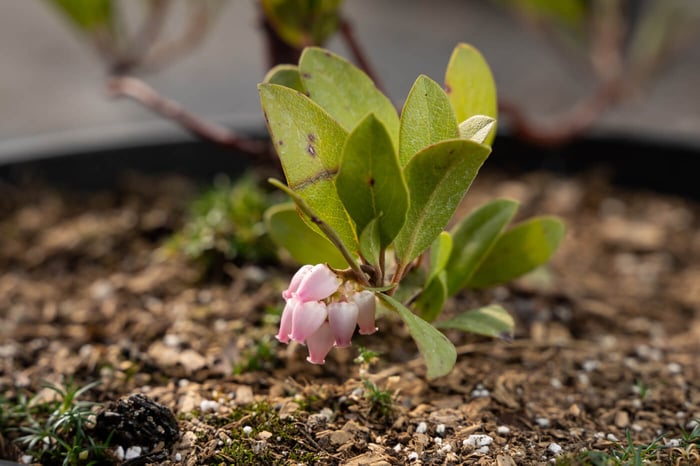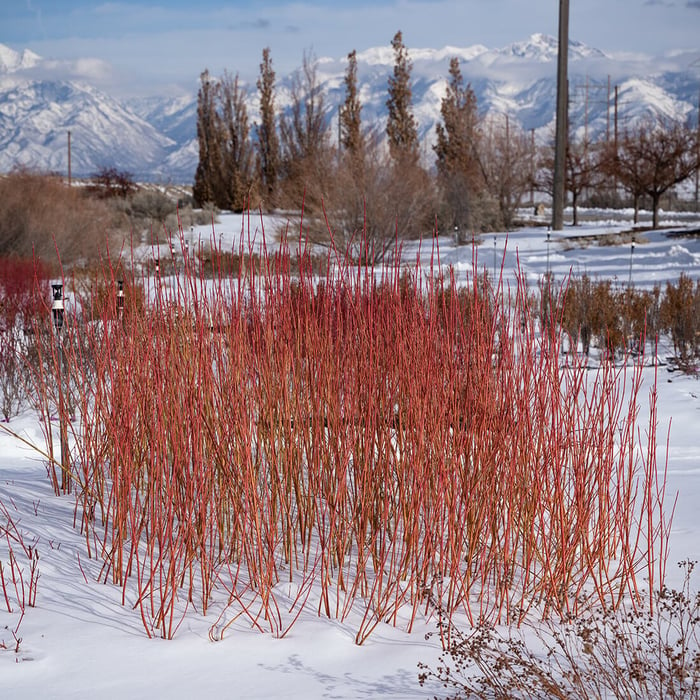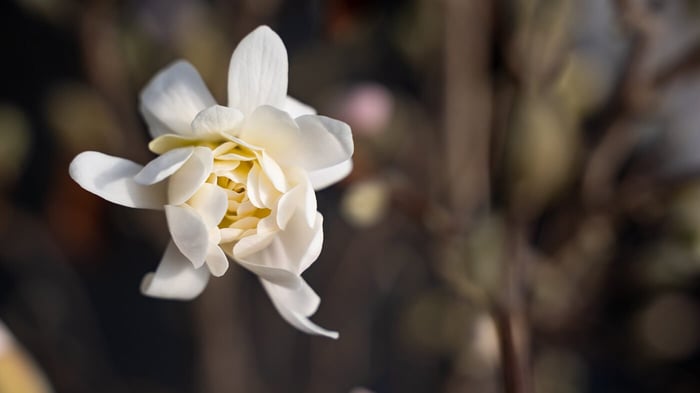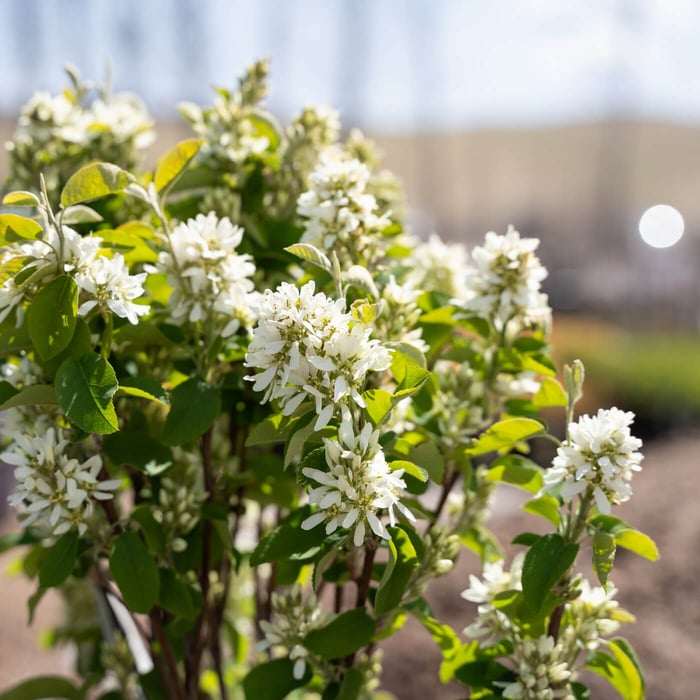Its common names: Kinnikinnick, Bearberry, Manzanita, are almost as difficult to say as its scientific name: Arctostaphylos (ark-toe-STAFF-ih-lus). But as hard as it may be to pronounce, it can have a striking year-round impact in your landscape.
Arctostaphylos is a genus of evergreen shrubs and small trees that includes over 50 species native to western North America, Europe, and Asia. In the United States, Arctostaphylos is most commonly found in California and eastward to the Rocky Mountains, including Utah. Most Arctostaphylos varieties you’ll find here in Utah are ground covers and shrubs ranging anywhere from 4 to 6 inches tall to 1 to 2 feet tall—and they make a wonderful addition to your landscape.
 Mock Bearberry Manzanita Height: 10 to 24 inches, Spread: 3 to 5 feet.
Mock Bearberry Manzanita Height: 10 to 24 inches, Spread: 3 to 5 feet.
Arctostaphylos is a great option for your Utah landscape because of its hardiness, low maintenance, and attractive appearance. It’s drought-tolerant, requires very little water, survives in rocky, sandy or clay soils, and can withstand temperatures as low as -30°F, making it well-suited to Utah’s variable climate. It can handle our extreme temperatures, requires very little water, and tolerates a variety of soils. It likes to grow on slopes because it prefers soil that drains well. It doesn't like to sit in water, so be sure that you don't overwater it. And don't give it water from Utah Lake. The water in Utah Lake is full of dissolved solids that will kill manzanita and several other plants. If you water your property with secondary water from Utah Lake, we have an entire section of our online catalog devoted to plants that can handle your water.
Arctostaphylos makes an attractive border plant, and its evergreen foliage and exfoliating, colorful bark provides year-round interest. These plants are easy to care for and require minimal pruning, providing an attractive, low-maintenance option for your yard. They're especially ideal if you're looking for something that looks a little wild, reminiscent of the great outdoors.
 'Panchito' Bearberry Manzanita Height: 10 to 24 inches, Spread: 3 to 5 feet.
'Panchito' Bearberry Manzanita Height: 10 to 24 inches, Spread: 3 to 5 feet.
The most popular varieties of Arctostaphylos for Utah landscapes are Kinnikinnick, and Bearberry Manzanita, or Mock Bearberry Manzanita. (These are all Arctostaphylos, and these common names are sometimes used interchangeably.) Each of these have cinnamon-colored bark, small, light-green, oval-shaped leaves, white-to-pink flowers, and small, edible, red berries that are loved by birds, bears (thus the name, bearberry), and other wildlife.
People eat these berries too. In fact, it’s an essential crop for many Native American people, who use it to treat a variety of ailments, including colds, sore throats, and headaches. If you wonder how the berries taste, manzanita means little apple in Spanish. You can even find recipes online for Manzanita Cider!
As you might imagine, Arctostaphylos is highly beneficial to wildlife, and will attract several amazing creatures to your yard. Its flowers provide nectar for butterflies and bees, and its fruits are a favorite food source for birds. Because it grows densely near the ground, it is also a safe haven for small mammals. Surprisingly, deer don’t bother this plant all that much, which is a major plus in Utah, where deer populations can be high.
So, if you’re looking for a low-growing, evergreen groundcover or small shrub that's native to this region, attracts wildlife, has edible fruit that doesn't make a mess, and makes your yard feel a little more like the great outdoors, you’ll love Arctostaphylos, or bearberry, or manzanita...Kinnikinnick—whatever you want to call it.
We call it fantastic!





